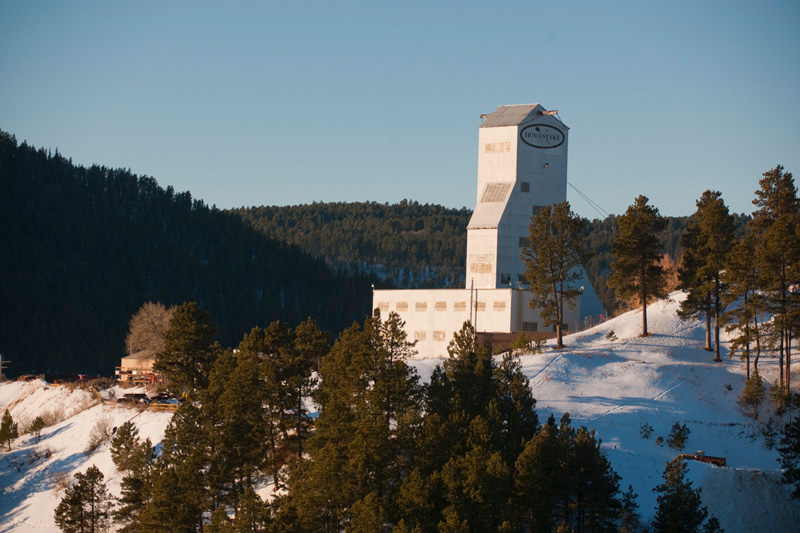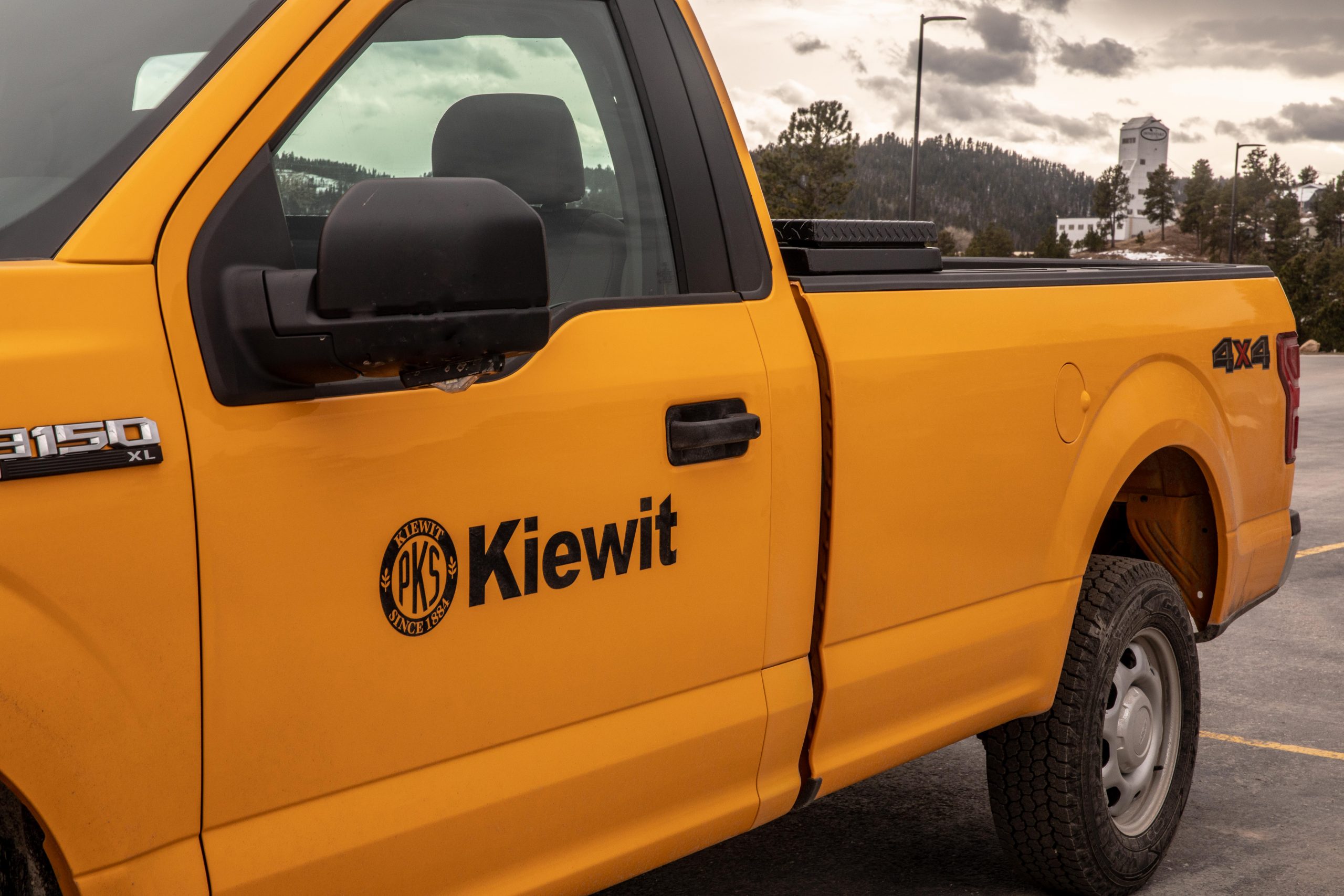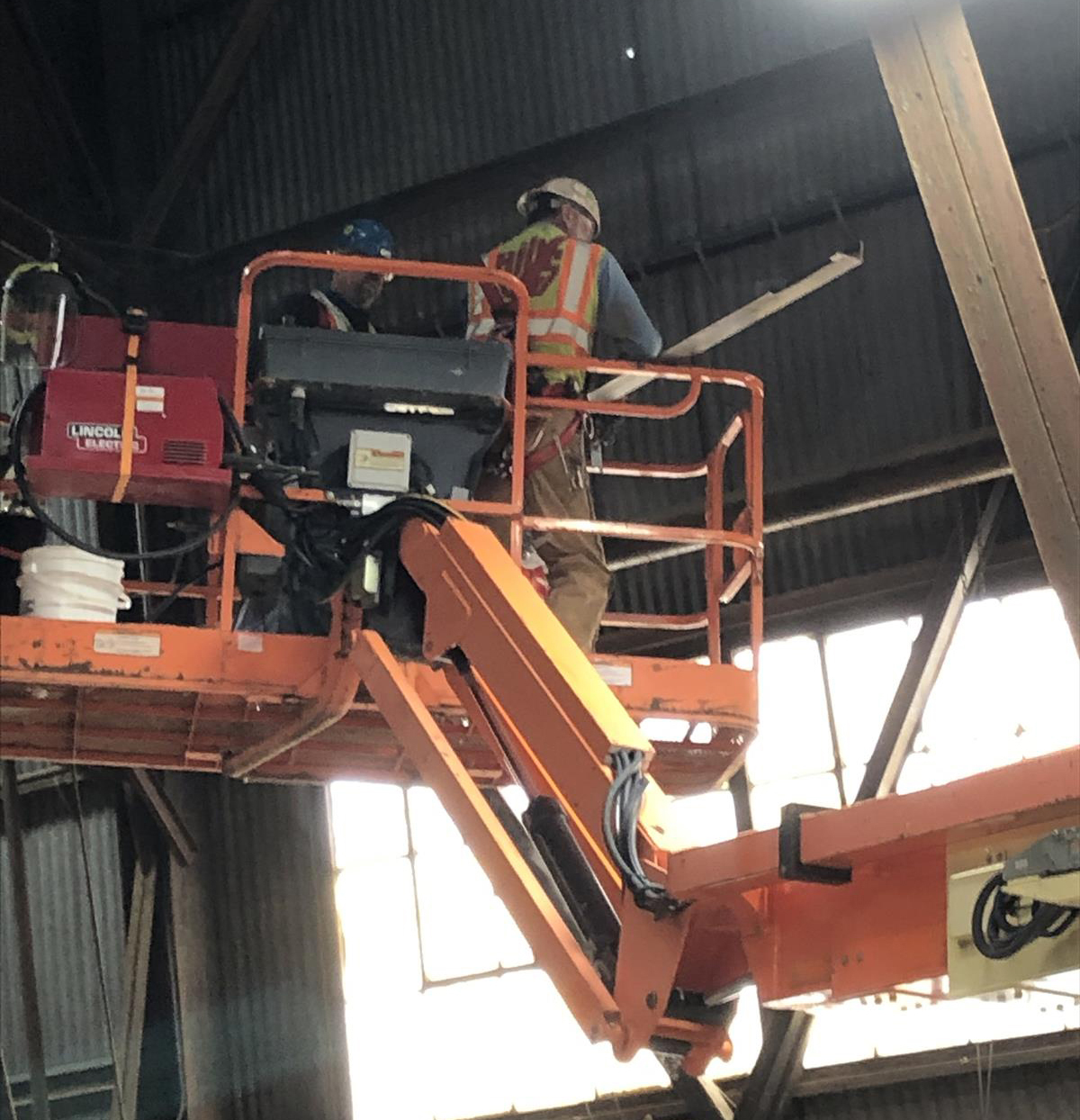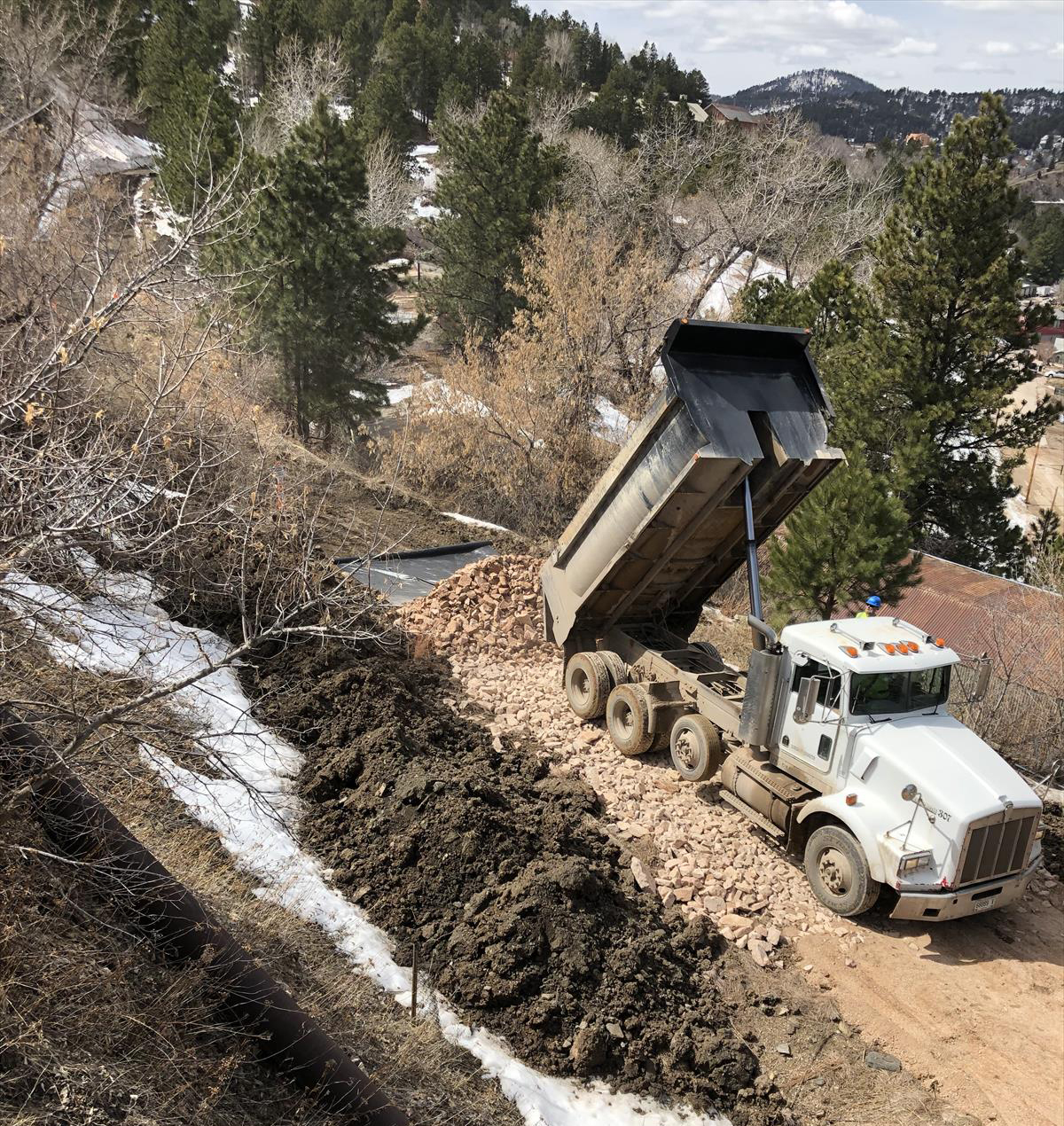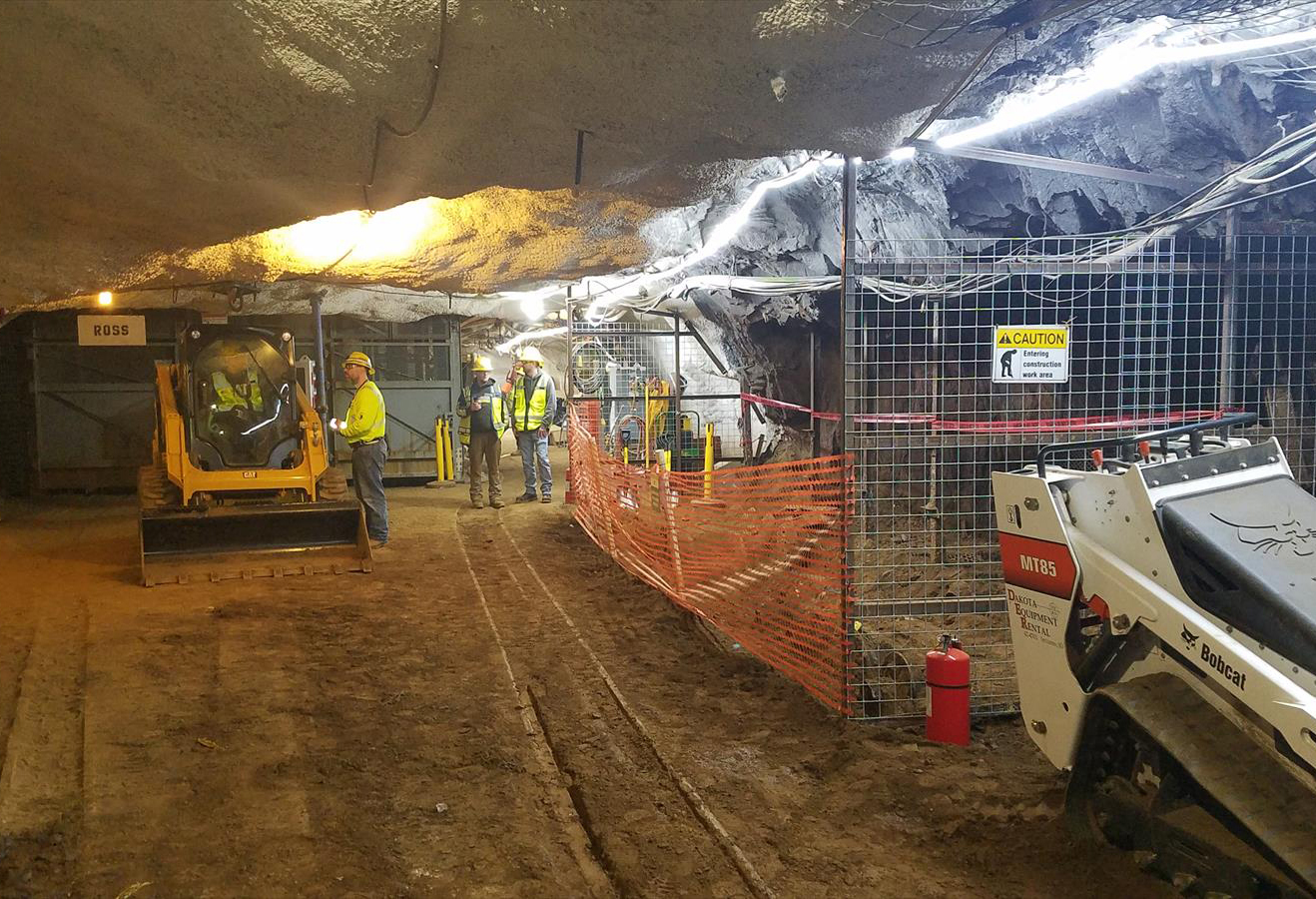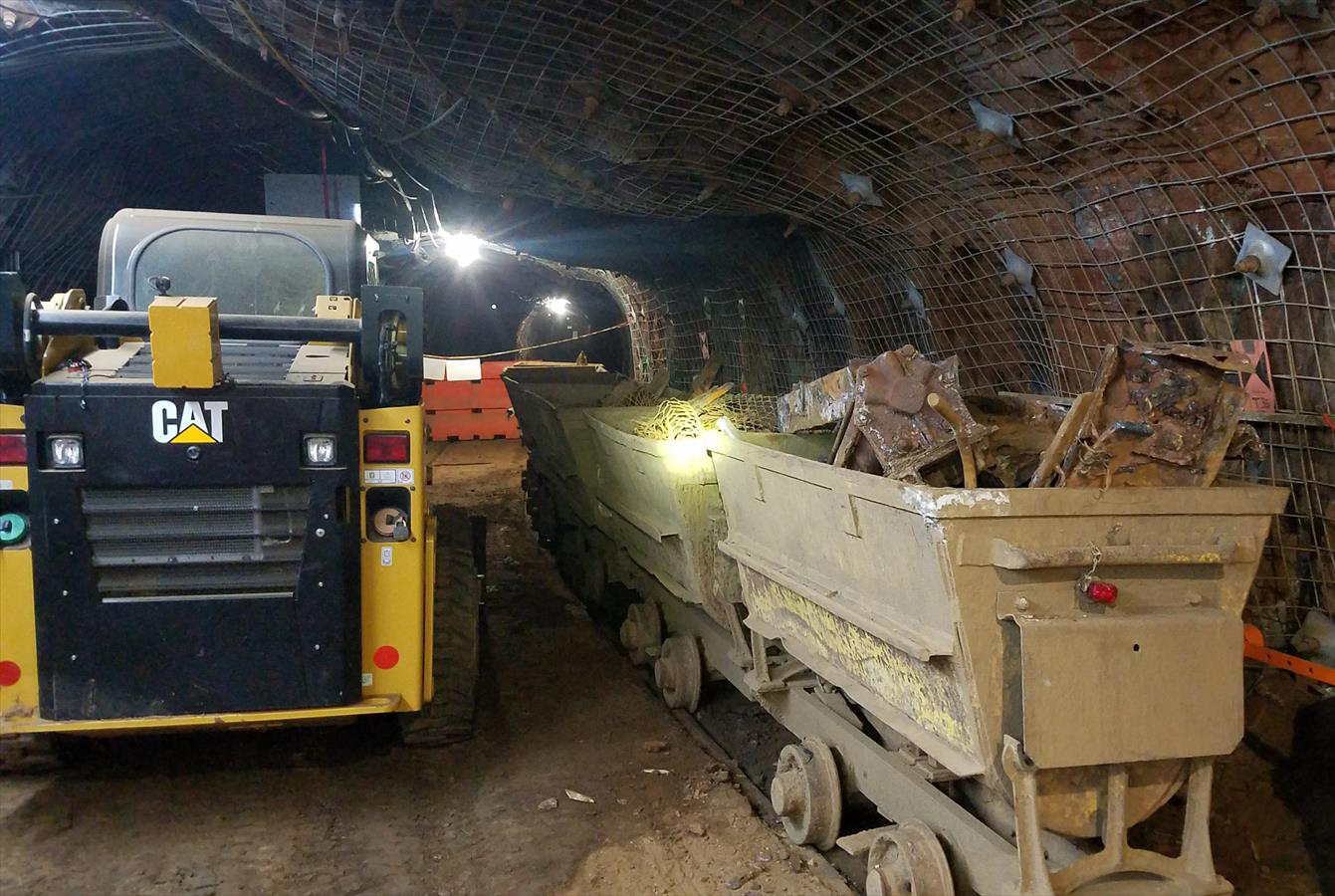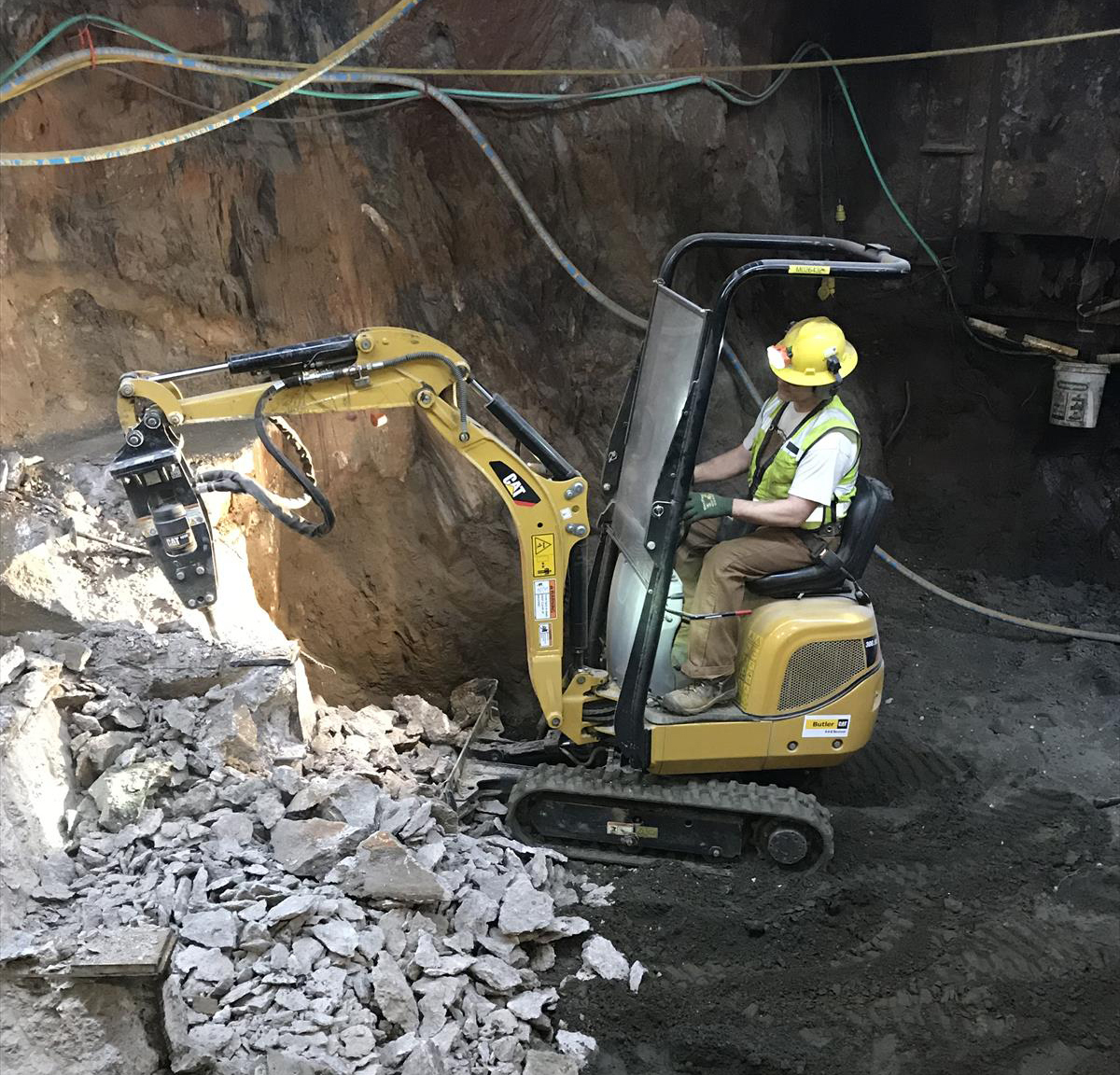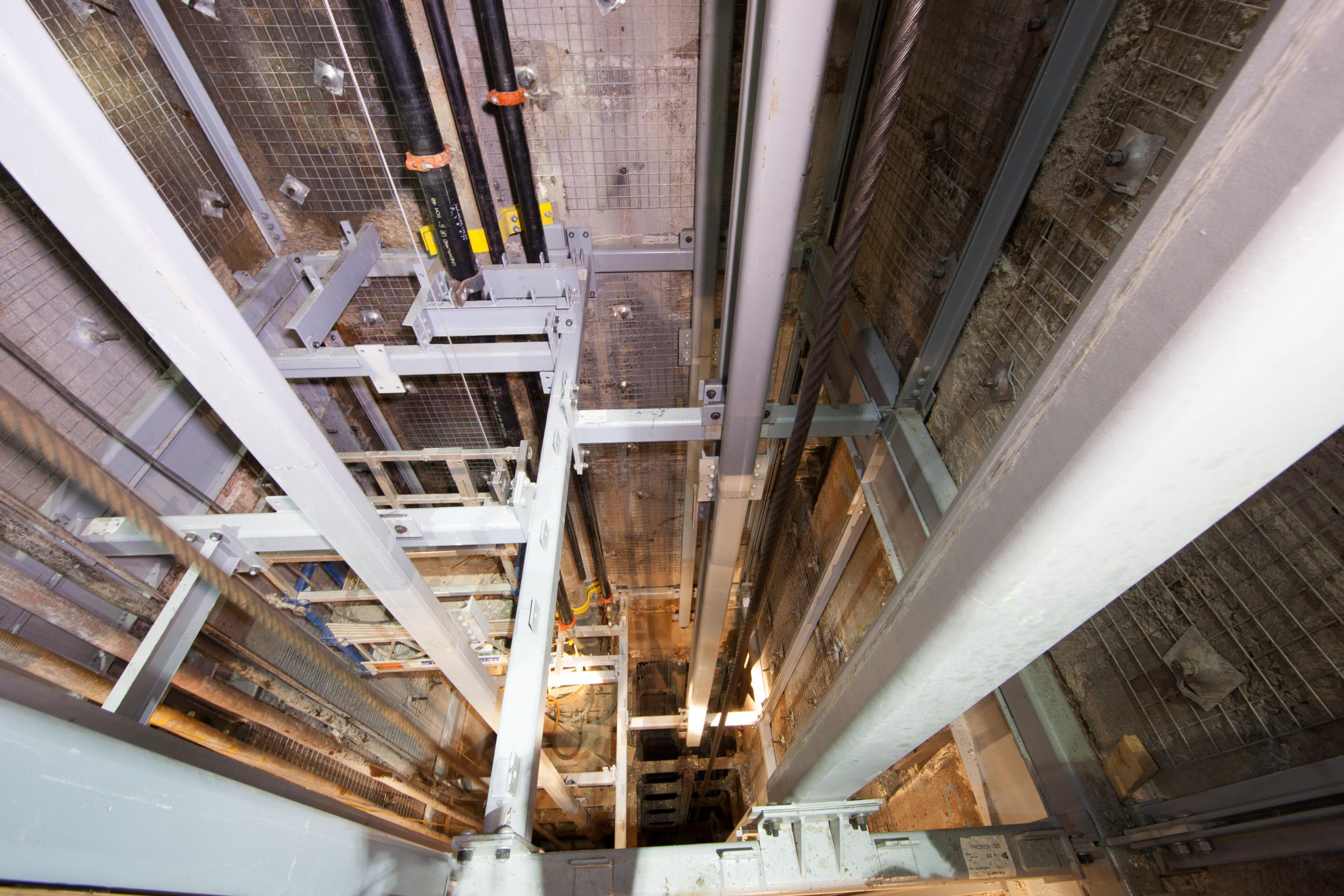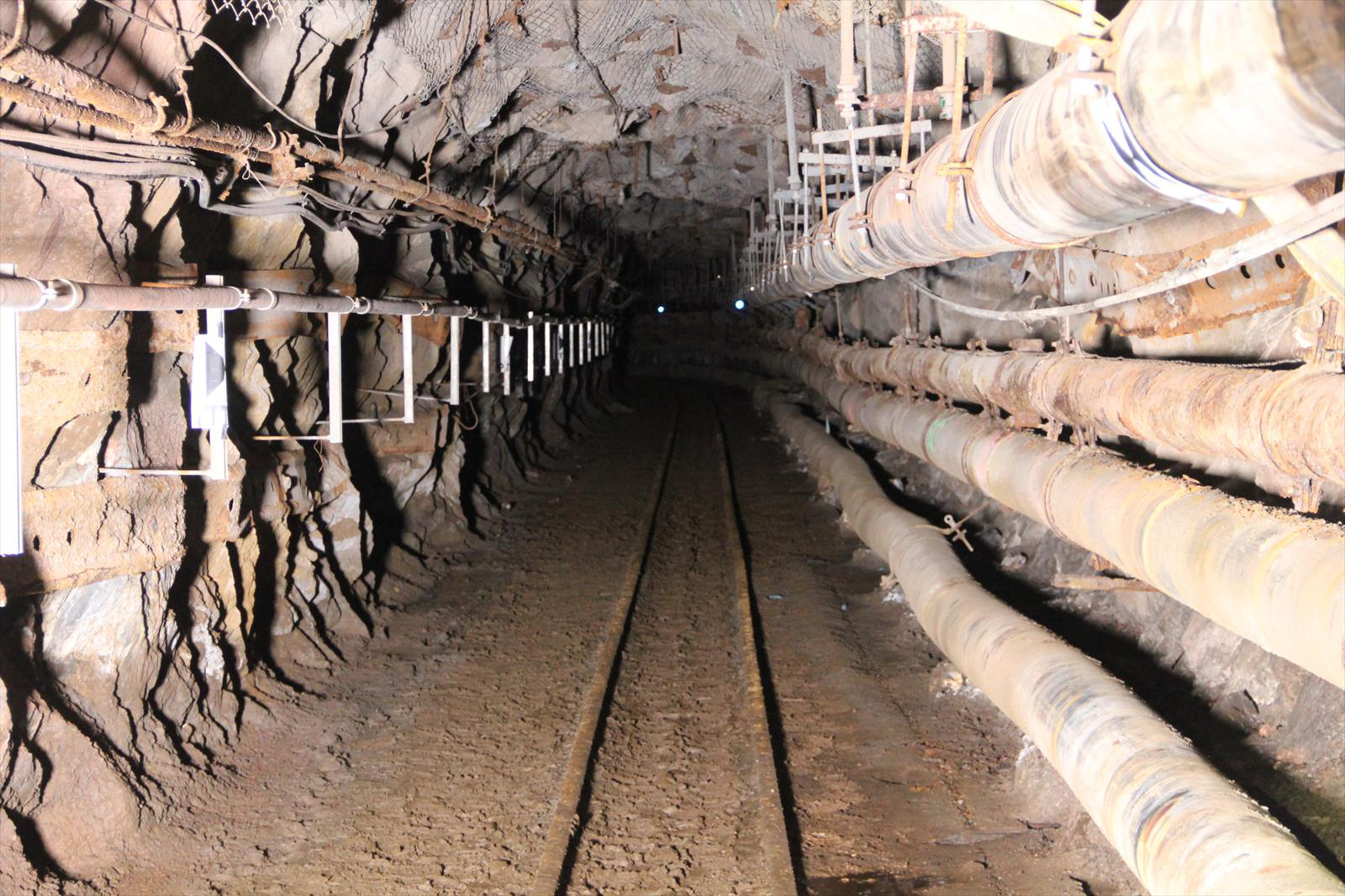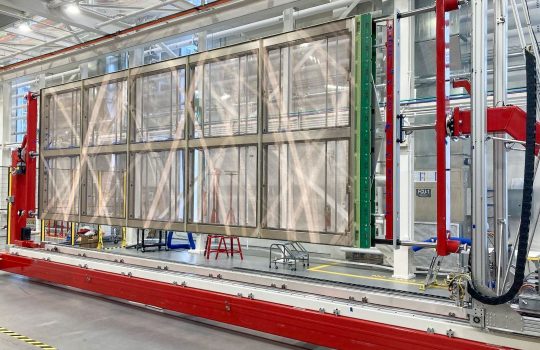Unlocking the mysteries of neutrinos in order to get a clearer picture of the universe and understand why we are here at all, is a monumental undertaking. However, before the international Deep Underground Neutrino Experiment, hosted by the Department of Energy’s Fermilab, can start solving those mysteries, a massive construction project is required to provide the necessary infrastructure, named the Long-Baseline Neutrino Facility.
The LBNF construction in Lead, South Dakota is under way, and a fleet of yellow pickup trucks has become the talk of the town and evidence of the beehive of construction activity that Fermilab is managing at the Sanford Underground Research Facility.
These trucks are owned by the company Kiewit, part of the Kiewit-Alberici Joint Venture, who are preparing the construction site at Sanford Lab for the excavation of about 800,000 tons of rock to create the huge caverns for the South Dakota-portion of the Long-Baseline Neutrino Facility. (Prep work for the Illinois-portion of the Long-Baseline Neutrino Facility, to be built at Fermilab, will start early next year.)
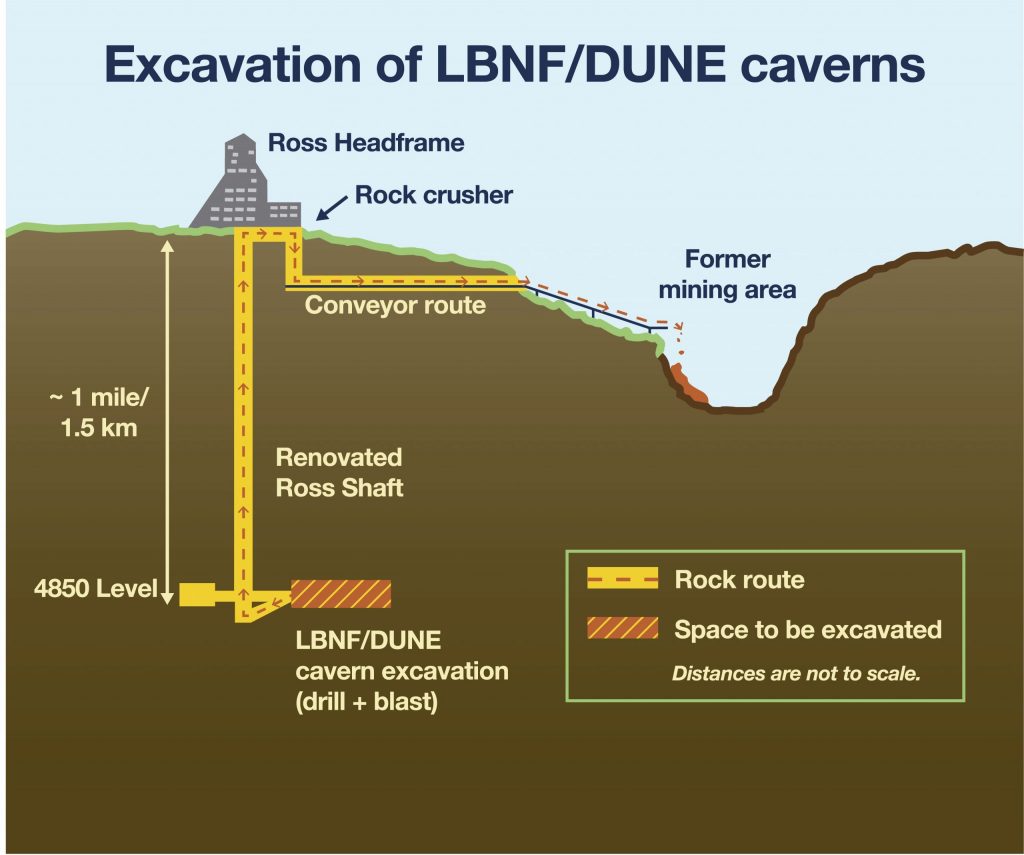
The excavation of LBNF/DUNE caverns requires the transport of about 800,000 tons of rock from a mile underground to the surface, and then transporting it to its final resting place in a former mining area known as the Open Cut. Credit: Fermilab
The excavation will create the three LBNF caverns that vary in length between 500 and 625 feet long, up to 70 feet wide and 95 feet tall. These caverns will house DUNE’s massive particle detectors and the necessary utilities.
Excavating such an enormous amount of rock a mile underground, bringing it to the surface, and then transporting it to its final resting place is a huge job. And creating the infrastructure for that job is a huge amount of work by itself—and is going on right now. Fortunately, the mile-deep shaft that workers will use to bring rock to the surface—known as the Ross Shaft—already exists and the seven-year-long shaft renovation project will soon wrap up. But other pre-excavation work remains to be done. The main tasks are (see photo gallery):
- Renovating the area at the bottom of the mile-deep Ross Shaft, where rock will be loaded into large buckets, called skips, that will travel up the shaft;
- Strengthening the Ross headframe—the structure that holds and operates the hoist that conveys the skips filled with rock to the surface;
- Refurbishing the three-story-tall rock crushing system next to the Ross headframe; it was last used in 2001 when the Ross Shaft was still used by the Homestake gold mine.
- Building and installing the three-quarter-mile-long conveyor system that will transport the crushed rock to the Open Cut, an open pit mining area excavated by the Homestake mining company in the 1980s. Despite the massive amount of rock to be excavated for the LBNF caverns, the deposited rock will fill less than one percent of the Open Cut.
- Rehabbing the existing tramway tunnel to prepare it for the installation of the conveyor system;
- Establishing the power infrastructure for operating the LBNF/DUNE experiment, which will include 70,000 tons of liquid argon cooled to minus 300 degrees Fahrenheit (minus 184 degrees Celsius).
And remember, this massive construction project will enable some truly groundbreaking science. DUNE, hosted by Fermilab, will be the world’s most advanced experiment dedicated to studying the properties of mysterious subatomic particles called neutrinos. The DUNE detectors will enable scientists to study a neutrino beam generated at Fermilab. The DUNE collaboration includes more than 1,000 scientists from more than 30 countries around the world. A large prototype detector for the experiment, constructed at the European research center CERN, successfully began recording particle tracks in September.
For more information on LBNF/DUNE, see www.fnal.gov/dune.

